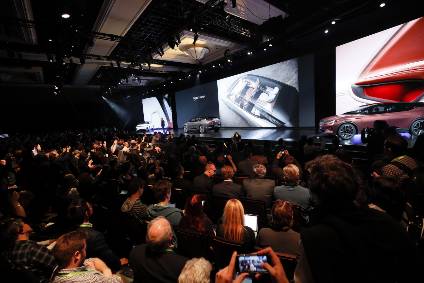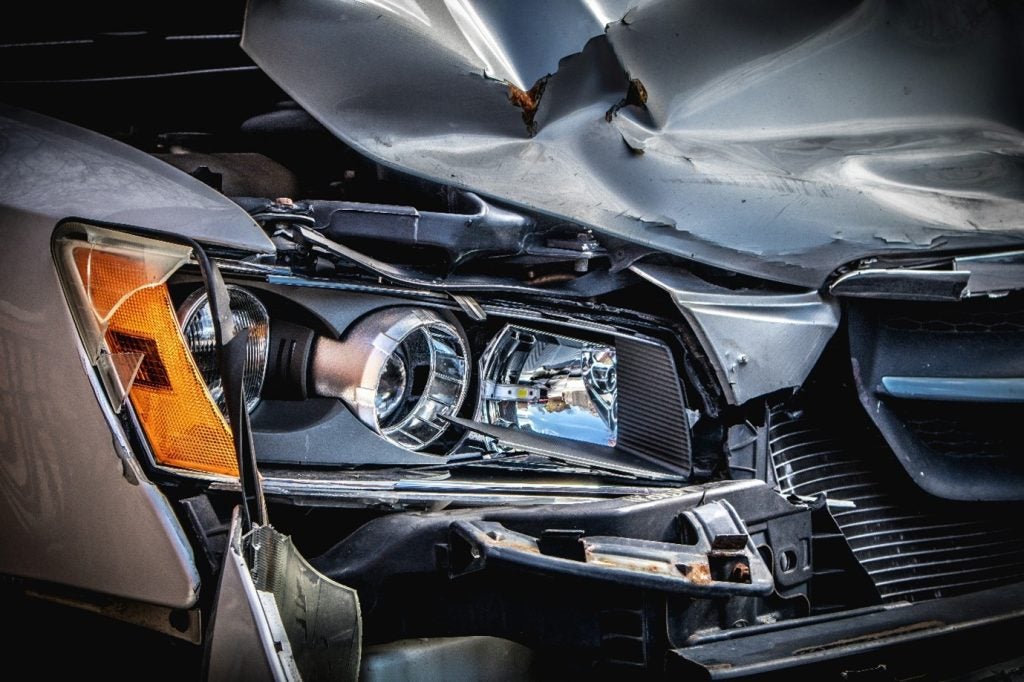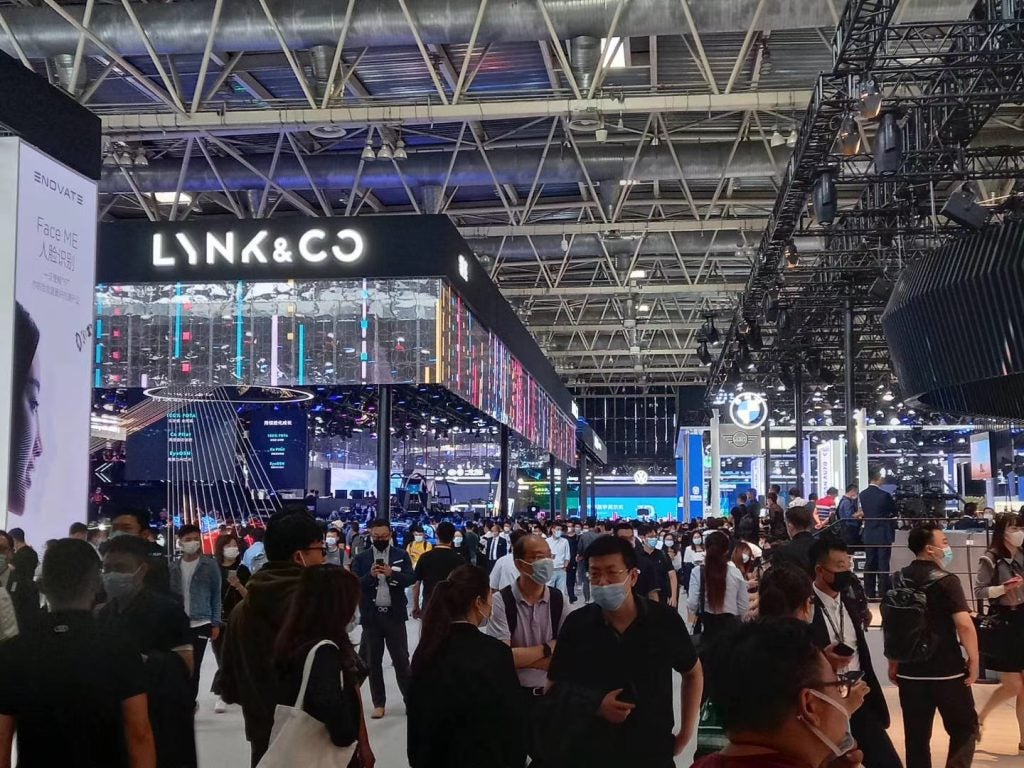
Self-driving cars have been talked about for decades. The earliest representation of such a car appeared way back at the 1939 World’s Fair where GM depicted electric cars powered by circuits embedded in the roadway and controlled by radio. Fast-forward to the 2018 Consumer Electronics Show (CES) and autonomous driving looks set to become a reality. Continuing just-auto/QUBE’s series of research snapshots, this one focuses on some of those suppliers exhibiting AV technologies at the CES.
The Society of Automotive Engineers (SAE) defines six levels of driving automation, spanning from ‘no automation’ (you do all the work, level zero) to ‘full automation’ (sit back and be chauffeured, level 5). Last summer, Audi stated that its next A8 sedan will be the first production vehicle to be equipped with L3 technology, marking a ‘tipping point’ on the road toward full autonomy. Looking around the most recent CES, we found a number of suppliers ready and capable of supplying L3-4 technology.
For its part, Visteon used the CES to reveal its so-called DriveCore, a modular platform for L3 and above autonomous driving situations. It enables automakers to select the processing capacity that they actually need for the functions they are building. “Visteon has transformed from a traditional auto supplier of multiple products such as interiors, climate, and electronics to a supplier that is exclusively focused on cockpit electronics and autonomous driving solutions,” Sachin Lawande, President and CEO of Visteon told just-auto during show. “Today, we are the only tier 1 supplier in the industry that is exclusively focused on automotive electronics systems that are increasingly defined by their software content. Nowhere is this more evident than in our DriveCore autonomous driving controller.”
We are often reminded that automated driving will generate huge amounts of data from sensors and other inputs such as radar, camera, LiDAR (Light Detection and Ranging) and maps. Continental’s showcase included a computer platform for automated driving systems and the processing of large amounts of data. Detailing the supplier’s approach to developing technologies that support autonomous driving, Dr Karsten Michels, head of Interior Systems & Technology, division Interior, Continental, told just-auto: “As a first step, our development platform for self-driving cars [CUbE, which stands for Continental Urban Mobility Experience] focuses on environment recording and software to substitute for the driver actions familiar to us today. At present, sensors incorporate radar, cameras and V2X-communication, which will be supplemented by further sensors such as LiDAR. Intelligent materials such as seat and floor coverings, interior cameras and an LED light strip are integrated into the interior. For communication with crossing pedestrians, an outer display is installed. To ensure good and reliable contact with the road, CUbE operates on Continental EcoContact tyres.”
Developed with Harman, Samsung used CES to unveil its DRVLINE platform, an open and modular platform for autonomous driving designed to scale from L3 upwards. Harman was acquired by Samsung for US$8bn last year. Since then, the pair have been focusing on engineering, high-performance computing, sensor technologies, algorithms, artificial intelligence and cloud and connectivity solutions that are scalable and capable of lower-level autonomy through to L5. Their first co-developed ADAS product will be a forward-facing camera featuring lane-departure warning, adaptive cruise control, collision warning and pedestrian warning algorithms. The new system will begin shipping this year.
Harman also demonstrated its new detection capabilities, forming part of the Harman Shield Solution, that protect autonomous and semi-autonomous vehicles against cyber-attacks aimed at the vehicle’s sensors.
How well do you really know your competitors?
Access the most comprehensive Company Profiles on the market, powered by GlobalData. Save hours of research. Gain competitive edge.

Thank you!
Your download email will arrive shortly
Not ready to buy yet? Download a free sample
We are confident about the unique quality of our Company Profiles. However, we want you to make the most beneficial decision for your business, so we offer a free sample that you can download by submitting the below form
By GlobalDataAptiv, recently formed from Delphi and ride-hailing company Lyft, formed a partnership to demonstrate a ‘first-of-its-kind’ fully automated point-to-point ride-hailing experience at the CES.
Over on Denso‘s booth, its showcase included automated driving technology that recognises obstacles and movement of other vehicles to automatically determine the optimal route.
Zenuity was formed a year ago as a joint venture of Volvo and Autoliv. Its mission is to support the transition of the auto industry into the autonomous age by creating and delivering leading advanced driver assistance, automated driving and cloud based automotive software. The company is focusing on developing universal autonomous driving technology that emphasises safety and security. While there is a lot of energy and effort poured into developing operating systems for autonomous vehicles, we should expect some concentration. During the CES, we caught up with Dennis Nobelius, Zenuity’s president to get his view on what we should expect in the next five years. He told us: “We believe there will be 2-3 autonomous driving operating systems surviving around 2020-2023, i.e. we will see quite a bit of consolidations and focus in the industry towards this.” Zenuity also announced that it is working with TomTom.
Meanwhile, ZF made a number of recent announcements related to autonomous driving. First, the ZF ProAI control box is ready for volume production one year after its introduction. The supplier also showcased a development vehicle with modular hardware and software for autonomous driving up to L4 and signed an agreement with a Chinese manufacturer for volume production of ZF ProAI in an L3 vehicle for the Chinese market.
Achieving the performance standards necessary for L3-5 driver autonomy at lower costs requires a fresh approach. So we spoke to a number of suppliers at CES about their path using LiDAR and thoughts on how the autonomous driving market could evolve, including Innoviz, AImotive, Velodyne, LeddarTech and Foresight Automotive. We also heard from Nuance, a developer of conversational and cognitive technologies and Luxoft , a global IT service provider.







